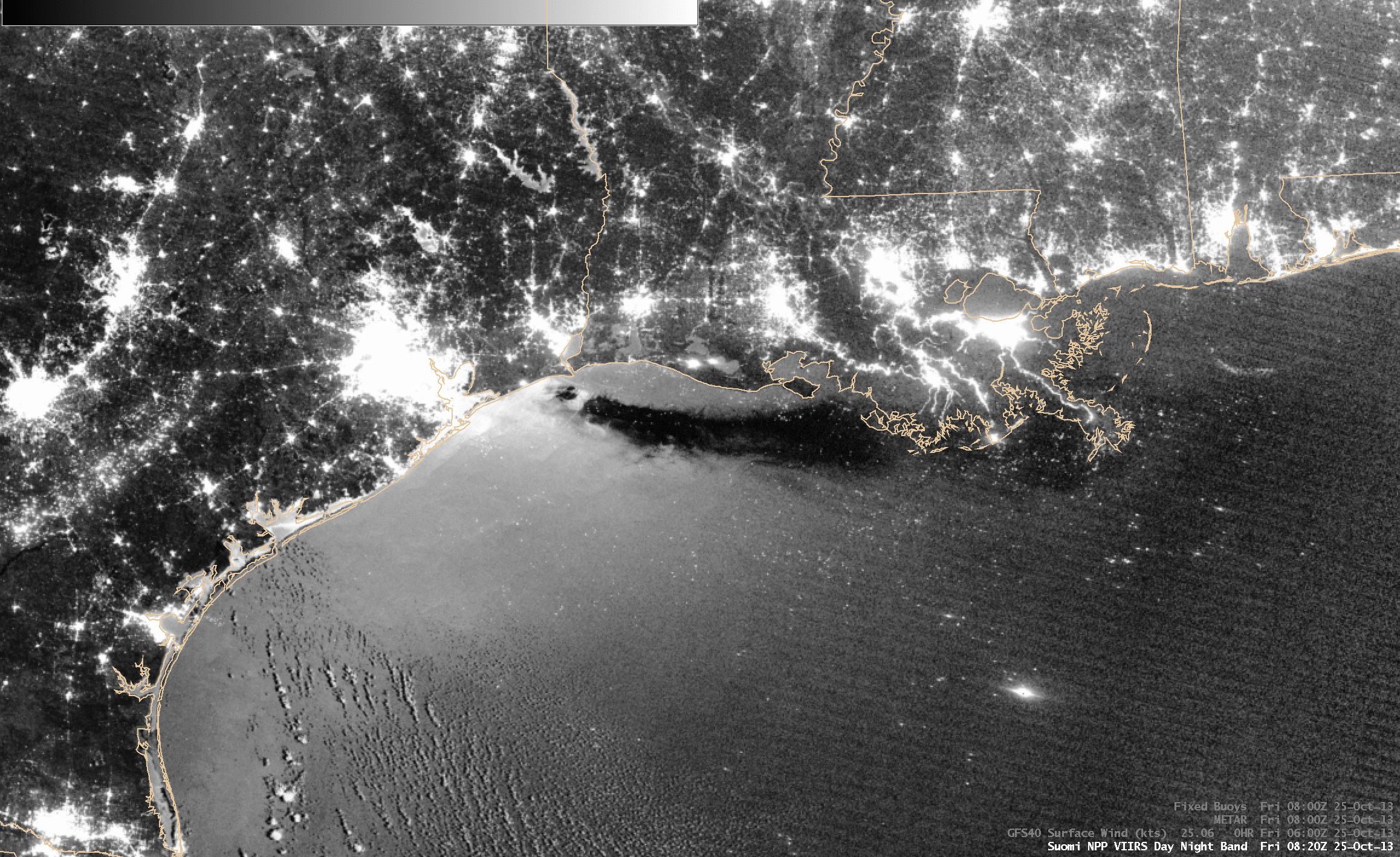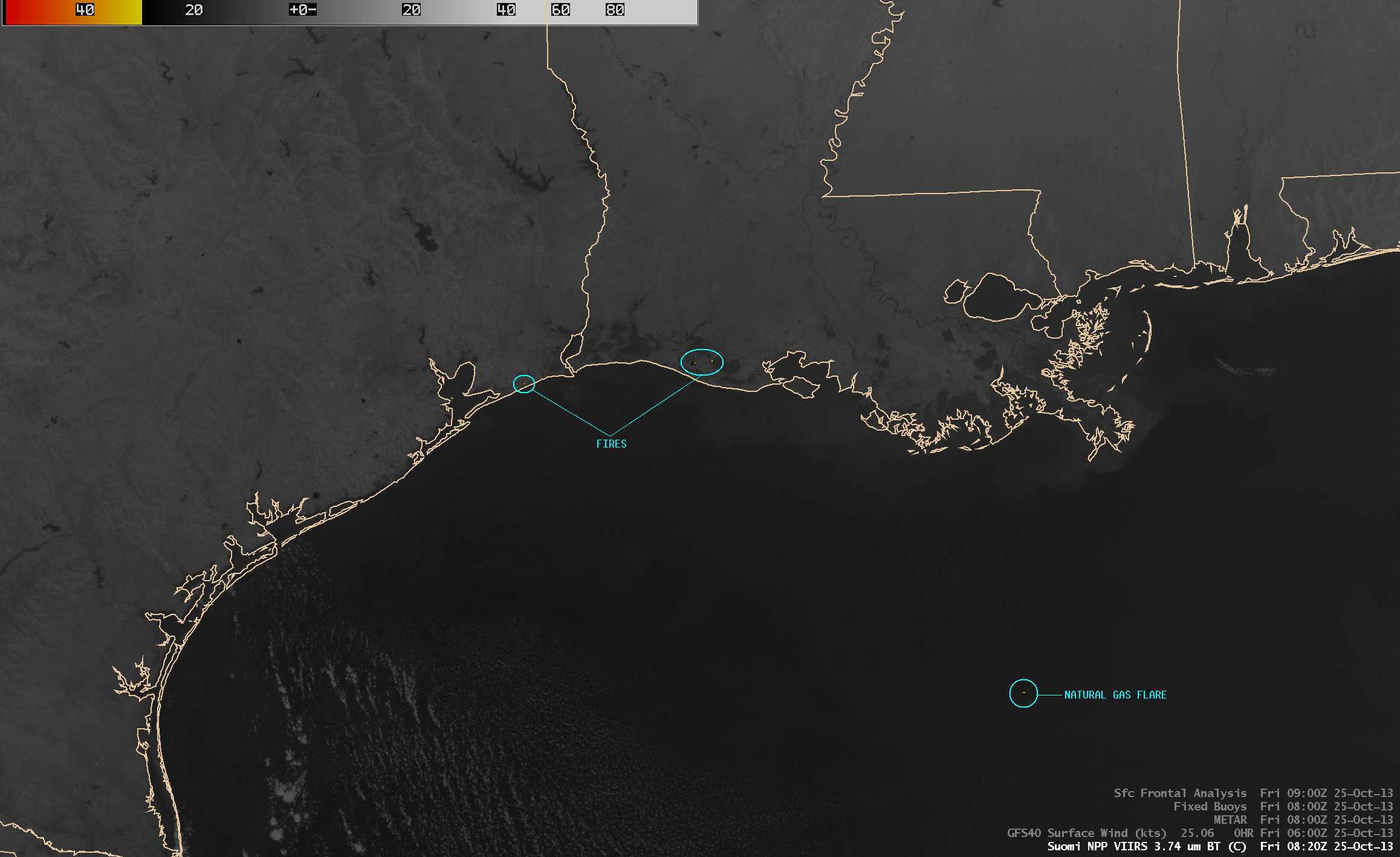Diagnosing areas of light winds over water at night, using reflected moonlight

Suomi NPP VIIRS 0.7 µm Day/Night Band image, with overlays of GFS surface winds, surface observations, and fronts
Just as we have documented in previous blog posts (on 25 April 2013, and 04 June 2009) using visible imagery during daylight hours, Suomi NPP VIIRS 0.7 µm Day/Night Band (DNB) imagery can also be used to help diagnose areas of light winds over water at night (using reflected moonlight). The VIIRS DNB image at 08:20 UTC or 3:20 AM local time on 25 October 2013 (above) showed a broad area of bright moon glint over the western Gulf of Mexico, off the coasts of Texas and Louisiana. However, located within this area of bright moon glint was a very dark band, oriented roughly west-to-east. An overlay of the 06 UTC GFS40 surface winds suggested that there should be a band of calm winds in this area, ahead of a slow-moving cold frontal boundary that was sagging southward across the Gulf Coast region. Surface observations and buoy reports confirmed that the winds within and near this dark DNB feature were either calm or very light. As a result, wind-driven wave heights there were minimal, allowing for an effectively “flat” water surface.
So why did this large area of smooth water appear darker on the VIIRS DNB imagery? The answer lies in the fact that with imagery from polar-orbiting satellites such as Suomi NPP, there is often a significant amount of sun glint or moon glint off the rough water surfaces below the satellite overpass; due to the varying scattering angles of the light reflected off of wind-driven waves, these areas of rough water surfaces appear brighter on DNB imagery. However, in an area of calm winds, the water surface becomes very flat; this flat water surface then reflects incoming moonlight like a mirror (with all the light being reflected back in one direction — but in this case, that one direction was not directly back toward the satellite).
One other feature of interest on the DNB image was the very bright “streak” located well south of the Mississippi River delta. A comparison of the DNB image with the corresponding VIIRS 3.74 µm shortwave IR image (below) indicated that a “hot spot” (yellow to red color enhancement) was co-located with the bright DNB feature — this suggests that a large natural gas flare was occurring at one of the drilling platforms at that particular time. Numerous smaller bright spots could be seen scattered across the Gulf of Mexico on the DNB image, signatures of lights from ships and other offshore drilling platforms. On the shortwave IR image, there were also hot spots seen in Texas and Louisiana, which could have been due to small fires.


